Case Studies.
Add Case Study
Our Case Study database tracks 22,657 case studies in the global enterprise technology ecosystem.
Filters allow you to explore case studies quickly and efficiently.
Download Excel
Filters
-
(6,653)
- (2,601)
- (2,127)
- (945)
- View all
-
(5,642)
- (2,469)
- (1,692)
- (826)
- View all
-
(5,571)
- (2,178)
- (1,766)
- (643)
- View all
-
(5,247)
- (2,179)
- (1,715)
- (1,321)
- View all
-
(2,881)
- (1,448)
- (574)
- (376)
- View all
- View all 15 Technologies
- (1,985)
- (1,985)
- (1,915)
- (1,679)
- (1,629)
- View all 42 Industries
- (8,728)
- (4,742)
- (3,618)
- (3,233)
- (2,947)
- View all 13 Functional Areas
- (3,304)
- (2,787)
- (2,603)
- (2,006)
- (1,630)
- View all 129 Use Cases
- (13,581)
- (5,296)
- (4,272)
- (3,520)
- (2,856)
- View all 9 Services
- (504)
- (432)
- (416)
- (382)
- (301)
- View all 1083 Suppliers
Selected Filters
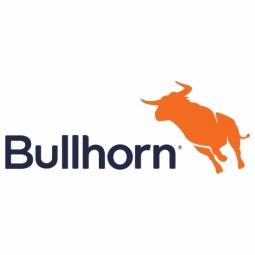
|
Astute Technical's Journey to GDPR Compliance and Enhanced Engagement with Herefish by Bullhorn
Astute Technical, a UK-based recruiting firm, was grappling with two significant challenges. The first was the need to become GDPR compliant following the implementation of the General Data Protection Regulation in May 2018. This legislation, aimed at protecting the privacy of EU citizens' personal data, hit the recruiting industry particularly hard. Astute had to clean up and secure its data quickly to avoid compliance issues and potential litigation. The second challenge was a lack of structured engagement with candidates and customers. The company noticed that many of its clients and candidates were slipping through the net, with some not having been contacted for a long time. Astute wanted a system or process that ensured every client and candidate was engaged with the organization, and that their Applicant Tracking System (ATS) was full of legitimate, quality jobseekers, and their business systems full of loyal, happy clients.
|
|
|

|
Cooptalis Enhances International Recruitment Efficiency with Bullhorn ATS & CRM
Cooptalis, an international mobility operator, was facing challenges with their existing recruitment tool. The tool was not built to handle the volume of work they had and couldn't meet the company's needs. It was difficult to conduct targeted and precise searches, quickly find candidates in the database, and visualize the progress of their searches. The tool also lacked an API interface, preventing Cooptalis from adding or extracting data. Moreover, it was not a SaaS tool, requiring installation on personal workstations and server and database maintenance, making it cumbersome to administer. The financial model was for lifetime service licenses and included server maintenance costs, with little pricing flexibility. Cooptalis needed a cloud tool; a customizable online ATS that could integrate with other applications.
|
|
|

|
Revolutionizing Customer Engagement in Healthcare Staffing: Mint Physicians Case Study
Mint Physicians, a locum tenens agency, faced a significant challenge in customer engagement. The responsibility of engagement was decentralized, left to individual account managers, resulting in a lack of uniformity and often being ignored. The nature of the staffing business requires strong relationships with clients and candidates, necessitating consistent communication. However, the decentralized approach led to a lack of accountability, with customer engagement and content creation often being pushed to the bottom of the account manager’s to-do list. This resulted in missed opportunities with customers and potential customers.
|
|
|

|
Digital Transformation of Motion Recruitment through Bullhorn Automation
Motion Recruitment, a specialized IT staffing firm, was seeking ways to improve their processes and provide a consistent experience to their candidates. Despite their success in the industry, they identified inconsistencies in candidate experiences based on the relationship with their recruiter. They also lacked a channel to collect unbiased feedback from their candidates and clients. With the advent of staffing automation, Motion saw an opportunity to leverage this technology to enhance their operations and decided to be an early adopter of automation technology in 2017.
|
|
|

|
Spencer Ogden's Explosive Growth Leveraging Bullhorn Recruitment CRM
In 2010, David Spencer-Percival and Sir Peter Ogden launched Spencer Ogden, a 360-degree energy sector recruitment agency. The company experienced rapid growth, expanding from a staff of fewer than 20 at launch to over 500 employees across six centers in London, Glasgow, Aberdeen, Qatar, and Houston by 2014. This rapid expansion presented a challenge in terms of managing customer relationships, scaling operations, and maintaining low capital expenditure. The company needed a recruiting software that could support its international growth, deliver a seamless service to customers, and allow for straightforward resource planning. The software also needed to be intuitive, aligning with Spencer Ogden’s business processes and easily adopted by staff.
|
|
|

|
Global Growth Acceleration: Talent International and Bullhorn Analytics Integration
Talent International, a rapidly growing tech and digital recruiting specialist, faced a significant challenge as it expanded its operations across multiple offices, markets, and continents. The company struggled with a lack of visibility over performance, disparate reporting methods, and the physical distance between offices. These factors contributed to the growth of offices as isolated entities rather than as a unified organization. The leadership team needed a solution that would allow them to actively improve performance across all locations and ensure that every individual within the business benefited from their direction. The challenge was to find a solution that could integrate with Talent International’s existing Bullhorn solution and provide a comprehensive overview of the company's performance.
|
|
|

|
Automating Engagement for Reliable Candidate Sourcing: A Case Study on Conexus and Herefish
The Conexus Group, a London-based conglomerate of five companies operating in the consulting, staffing, and training space, faced a significant challenge in managing their candidate database. The database, built over a decade and a half, was filled with dormant, incomplete, or outdated entries. This made it difficult for recruiters to efficiently make placements. Candidates were typically contacted once or twice after registration, but if they weren't relevant at the time, communication would generally cease within six to twelve months. With thousands of candidates in the system, manually re-engaging was not a feasible solution. The group lacked the capacity and technology to revive these dormant relationships.
|
|
|

|
USPRO's 10x Growth: A Case Study on Strategic Partnerships with Bullhorn and Madison Resources
USPRO, a leading staffing agency in the Defense and Healthcare Industries, faced a significant challenge in scaling their business. Despite landing a large contract with a Department of Defense contractor in 2009, they lacked the necessary back-office support, technology, and capital to fully leverage this opportunity. The company was ill-equipped to handle large payroll operations, billing, and funding, which were critical to their growth. This situation posed a significant risk to their business, as they were unable to effectively manage their resources and lacked the necessary infrastructure to support their expansion. The challenge was to find a solution that would not only address these operational issues but also allow them to focus on their core competencies and revenue-generating activities.
|
|
|
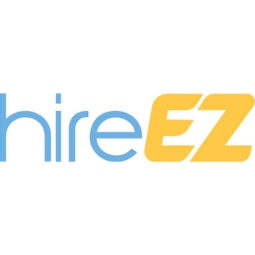
|
IMVU's Transformation: Leveraging AWS for Advanced Analytics and Data Streaming
IMVU, the world’s largest avatar-based social network, was facing challenges with its on-premises infrastructure which was limiting its capacity for advanced analytics. The company had been an early adopter of Apache Hadoop and Big Data technologies, but found it difficult to support and upgrade their 90-node Hadoop cluster and in-house built tooling. IMVU’s analysts lacked the tools to rapidly generate a range of business-critical reports on customer in-game behavior at scale. They were working with historical data in batches, which made analytics more complex and created multiple bottlenecks. Late reports resulted in inaccurate assumptions about customer in-game purchases, leading to slower sales and loss of profit. The analytics team also lacked a test environment to efficiently check analytics assumptions. The company sought to modernize their platform’s data architecture by introducing CI/CD, Infrastructure as Code (IaC), and other best practices, to achieve faster analytics iterations, better maintainability, and lower TCO.
|
|
|

|
DIVERSANT's Success: Reducing Sourcing Time by 35% and Boosting Placement Revenue by 7% with hireEZ
DIVERSANT, the largest African American owned IT staffing firm in the U.S., specializes in helping organizations find direct hire candidates with specialized backgrounds in the IT space. However, they faced challenges in identifying candidates with niche skill sets. They used a variety of sourcing tools, job boards, referrals, and networking opportunities, but still struggled to find individuals with specialized backgrounds and hard-to-find areas of expertise. In 2019, DIVERSANT identified the need to invest in tools that would accelerate their ability to find qualified candidates and help clients support their hiring objectives. They conducted a vendor evaluation process to research additional solutions that could help.
|
|
|

|
Dynamic Search Group Enhances Recruitment with hireEZ's Comprehensive Talent Pool
Dynamic Search Group, a staffing and recruiting company based in Irvine, CA, was facing a significant challenge in sourcing fresh talent for their clients. The company primarily focuses on accounting and finance roles, ranging from CFO level to accounting clerks. However, they were struggling with a small candidate pool, primarily sourced from LinkedIn. The issue with this approach was that the same group of candidates was being selected and exhausted, as many recruiters were tapping into the same LinkedIn talent pool. Patricia Perez, Managing Partner at Dynamic Search Group, noted that the candidates were often overwhelmed due to the bombardment of recruitment companies reaching out to them. This situation led to the need for a more diverse and less saturated source of potential candidates.
|
|
|

|
Poshmark's Enhanced Candidate Sourcing and Engagement with hireEZ
Poshmark, a leading social commerce marketplace, was facing several challenges in its recruitment process. With a small team and limited bandwidth, the company was struggling to find a single, suitable tool that could accomplish multiple tasks. The company was also experiencing limitations with sourcing from LinkedIn alone and had difficulties in effectively engaging candidates, especially due to minimal access to accurate contact information. The company needed a platform that could help them bring in more qualified candidates quickly to keep up with business demands. They were looking for a solution that could help them source candidates for various positions on the engineering team, including Applications, Infrastructure, Security, Front-End, and Back-End Engineers.
|
|
|
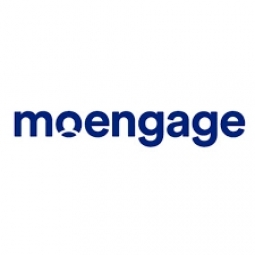
|
Reviving Dormant Customers: Airtel Wynk Music's Insights-led Engagement Strategy
Airtel Wynk Music, one of India's largest mobile entertainment platforms, faced a significant challenge with a large percentage of their customers going dormant. The company observed that many customers who regularly streamed music on their app would become inactive until a new music album or movie was released. However, due to the Covid-19 pandemic, new music releases in India decreased significantly. Instead of waiting for customers to return to the app on their own, the Growth team at Wynk wanted to proactively engage these dormant customers and encourage them to return to the app.
|
|
|
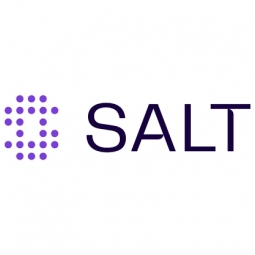
|
Securing APIs in FinTech: A Case Study of Finastra
Finastra, one of the world's top three FinTech companies, faced significant challenges in securing its APIs. APIs form the core of Finastra's service, connecting banks with FinTech services. However, API security has become increasingly complex over the years, with attacks on the rise and traditional application security tools failing to provide adequate protection. The company's API traffic grew by 51%, while malicious traffic increased by 211%. Attackers have realized that APIs are now used for more business-critical services and share an increasing amount of sensitive data, leading to a heightened focus on exploiting APIs for attacks. Finastra faced internal and regulatory pressures to secure its APIs. The company needed a solution that could prevent account takeovers, identify abnormal behavior, and differentiate between 'normal' abnormal (e.g., a changed API) and malicious traffic.
|
|
|
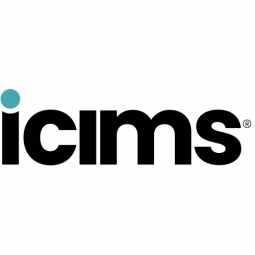
|
Transforming Hiring Process in Healthcare: A Case Study of Hospital Sisters Health System
Hospital Sisters Health System (HSHS), a multi-institutional healthcare system with facilities in Illinois and Wisconsin, was facing a significant challenge in attracting and hiring healthcare workers, particularly nurses. The competition for such professionals was intense, and HSHS needed to differentiate itself from other healthcare organizations. However, their career pages were basic and lacked engaging content to attract and retain potential candidates. Previously, the Talent Acquisition (TA) team had invested in creating high-quality videos with an external team, but this approach was costly, time-consuming, and often required additional editing when employees featured in the videos left the organization.
|
|
|

|
Revolutionizing Recruitment: Mott MacDonald's Use of Marketing Automation
Mott MacDonald, a global engineering company, was grappling with the challenge of sourcing highly specialized engineering talent. The company was operating on a traditional, reactive recruitment model which was proving to be inefficient in the face of the increasing scarcity of specialized talent. The company needed a long-term, sustainable solution to its recruitment challenges. The core aim was to improve key business metrics and build upon the previous year’s successes after a team restructuring. The company sought to effectively manage their candidate pipelines and better focus their recruitment efforts.
|
|
|

|
Streamlining Recruitment Process in Construction: A Case Study of OHLA USA
OHLA USA, one of the world's largest global construction companies, faced a significant challenge in its recruitment process. The remote nature of the hiring manager role made it difficult for recruiters to obtain feedback on candidate interviews. With over 40 open roles at any given time, and multiple candidates and interviews per role, the task of tracking down hiring managers for feedback across all hiring touchpoints was time-consuming and inefficient. The company needed a solution that would streamline this process, making it easier for recruiters to gather feedback and manage the recruitment process more effectively.
|
|
|

|
Servier Saudi Arabia: Decreasing Hiring Time with iCIMS Video Interview
Servier Saudi Arabia, a branch of the international pharmaceutical company Servier, was facing a significant HR challenge. As part of Saudi Arabia's Vision 2030 initiative to decrease unemployment, Servier was tasked with localizing talent and hiring for pharmaceutical professions such as medical representatives and medical affair officers. The company aimed to hire the best graduates and intermediate-level talent to boost their talent development program and lead a successful transformation with the next generation of pharmaceutical professionals. However, the traditional hiring process was time-consuming, often taking months to hire for a single position. This slow process was hindering Servier's ability to meet their hiring targets and compete in Saudi Arabia's competitive talent market.
|
|
|
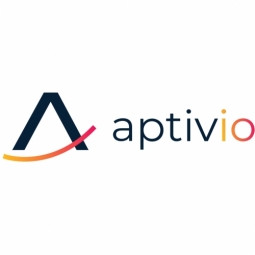
|
Coherent's Expansion into New Industries with Aptivio's AI Growth Engine
Coherent, a company offering business software development services, was looking to expand into new industries. Their services, which transform Excel data into code, are widely applicable across various sectors. However, the challenge was to identify and quantify the conversion potential of opportunities in these new markets. They needed a tool that could provide insights into these industries and opportunities, and enable them to address these opportunities with contextual messaging. The company also required a solution that could unify their sales and marketing data.
|
|
|

|
Aptivio's Role in Enhancing CREALOGIX's Go-To-Market Strategy in Emerging Markets
CREALOGIX, a global leader in digital banking technology, was facing challenges in executing their Go-To-Market (G2M) strategy in emerging markets, specifically in Australia, New Zealand, and the Pacific Islands. The company was struggling with lead generation efficiency and effectiveness, establishing connections with relevant buyers, resolving contact issues, and discovering targeted opportunities for early contact with prospects. Their G2M strategy was aimed at various segments including retail, SME, and medium-corporate banking and wealth management firms. The main challenge was to develop the market, build brand relationships and presence, establish partner relationships, and identify potential opportunities.
|
|
|
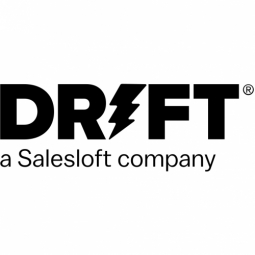
|
Monarch Institute's Success: 11K+ Chat Qualified Leads in One Year
Monarch Institute, a nationally accredited education provider based in Australia, faced a complex challenge. The education they provide is a complex product, and prospective students often struggle to understand government funding and eligibility criteria that vary from state to state. The institute needed a tool that could help students navigate their diverse needs in a frictionless way, even during off hours. The CEO, Nick Chapman, began looking for a chat solution that could provide a seamless experience for their students, replicating the same level of service they would receive during regular hours.
|
|
|

|
Boosting Opportunities by 66%: Ping Identity's Success with Drift Professional Services
Ping Identity, a leading identity security company, faced a significant challenge in 2020. The web team at Ping noticed a significant shift in how users wanted to access information. The traditional method of acquiring leads by gating content and having users fill out a form was becoming increasingly outdated. The team wanted to shift towards a model that provided value upfront, demonstrating their thought leadership and value before asking for user information. The primary objective was to transition to an ungated content model, but they needed a tool to support this change.
|
|
|

|
Accelerating Sales Cycle and Enhancing Customer Experience: Pipefy's Success with Drift
Pipefy, a low-code business process automation platform, was facing challenges in bolstering their lead generation activities. Despite having a rapidly growing platform since its inception in 2015, the company was looking to automate as much of their internal processes as possible to make the jobs of their sales team easier. They were in need of a platform that would not only maximize the number of leads engaging with their sales reps but also facilitate successful collaboration between marketing and sales. The ideal solution would also create a superior buyer experience for website visitors, prevent emails from getting lost in inboxes, boost follow-up times, and create a channel to engage buyers on their terms.
|
|
|

|
Digital Transformation Success: Quadient's Lead Generation with Drift
Quadient, a company that provides intelligent communication automation, parcel locker solutions, and smart mailing and shipping solutions, was facing a challenge in generating more engagement and prospects. They identified the need for digital transformation to meet their customers' expectations and increase engagement with potential customers. The team was also looking for an efficient solution to effectively route support queries. They wanted to move forward into the 21st century and explore new ways of engaging with their existing customers while also trying to increase engagement with their prospects. The idea of a chatbot made sense to them based on their customers and their expectations.
|
|
|

|
Roland DG's Digital Engagement Strategy: Influencing $1.8 Million in Pipeline with Drift
In 2021, Roland DG, a global manufacturing leader, identified two key challenges that led them to consider an automated conversational solution in EMEA. Firstly, they observed that customers wanted to interact with them on their own terms, not just when their team was available. Secondly, they noticed that while many companies across various industries were using chatbots to directly engage their website visitors, manufacturing companies were yet to catch up with this trend. Recognizing these challenges, Roland DG began exploring various chat providers to guide their digital engagement strategy.
|
|
|
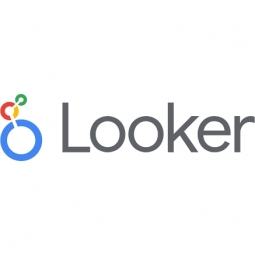
|
Autogrill: Leveraging IoT for Real-Time Sales Data Analysis and Enhanced Customer Experience
Autogrill, a leading provider of food and beverage services for travelers, operates in 31 countries with over 60,000 employees and an annual turnover of €5 billion. The company operates 4,000 points of sale worldwide in 1,000 locations, including concessions of well-known brands such as Starbucks and KFC. With around 400,000 transactions and up to 1 million receipt lines a day in Italy alone, tracking the performance of individual concessions was a significant challenge. The company needed a solution to monitor in-store sales more closely and react faster to sales trends. The existing system provided sales updates on a daily basis, but with a day’s delay, making it difficult to react quickly to changes in consumer behavior and trial new promotions effectively.
|
|
|

|
AZ Delta: Leveraging Data Analytics for Personalized Medicine
AZ Delta, one of Belgium’s largest hospitals, was faced with the challenge of leveraging its vast amount of medical data to generate insights and improve healthcare. The data was digitally available but not in a single location and was difficult to work with at scale. The hospital's on-premises IT infrastructure was not capable of powering large scale data analytics. The data was complex and varied, with a single patient’s Electronic Medical Record (EMR) containing thousands of data points. With over 650,000 patient consultations a year, storing, processing, and analyzing this data was a significant challenge. The data needed to be processed and normalized before it could be mined. Manual queries took up to 15 minutes to run due to the scale of the project, limiting the hospital's ability to efficiently utilize the data.
|
|
|
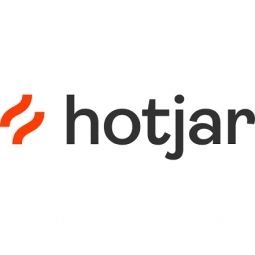
|
Tripling Conversions in a Month: A Case Study on Materials Market
Materials Market, a UK-based online platform connecting construction material suppliers with customers, was facing a significant challenge with their website's conversion rate. Despite the company's rapid growth and impressive sales figures, the site's conversion rate was a mere 0.5%. Andrew, the Operations Director, identified three key areas of concern through Hotjar, a user interaction tracking tool. These included a confusing call to action (CTA), issues in the checkout flow leading to higher than expected drop-offs, and a problematic cookie policy causing visitors to bounce. The CTAs were obscured on mobile and confusing on desktop, and the checkout process was cumbersome and lengthy, causing one in every four visitors to abandon their purchase. The cookie policy was also causing confusion among users, leading to a high bounce rate.
|
|
|

|
Boosting Conversion Rates: The Good's Holistic Approach with Hotjar for Swiss Gear
The Good, a leading Conversion Rate Optimization (CRO) agency, was tasked with improving the conversion rates for Swiss Gear, a company selling a variety of goods including high-quality backpacks, luggage, travel accessories, and watches. Swiss Gear's website had been producing strong sales numbers, particularly during the holiday season. However, the company wanted to maintain these sales numbers year-round and convert existing traffic into buyers at a higher rate. The challenge was to identify areas for improvement on the website to enhance the user experience and increase conversions. The Good needed to understand the users' needs and behaviors on the website, without letting their own biases and knowledge guide their decisions on what to test.
|
|
|

|
AllSaints: Enhancing Online Retail Experience and Reducing Costs with Google Cloud
AllSaints, a global fashion retailer, faced a significant challenge in managing its online sales platform. With over two million visits per month to the AllSaints website, delivering a smooth, fast online experience was crucial. However, predicting sales during peak demand periods was difficult, and the need for infrastructure often doubled during these times. The company had to maintain more than 60 servers to meet peak demand, but almost half of these were idle outside of peak periods, making the solution expensive. Additionally, installing additional capacity was a slow process, delaying structural changes such as expansion into new territories or the deployment of new features. As an established luxury brand, AllSaints knew that its customers valued consistency and a seamless online experience. Shortfalls in infrastructure capacity compromised that consistency by causing site instability and degraded performance.
|
|




